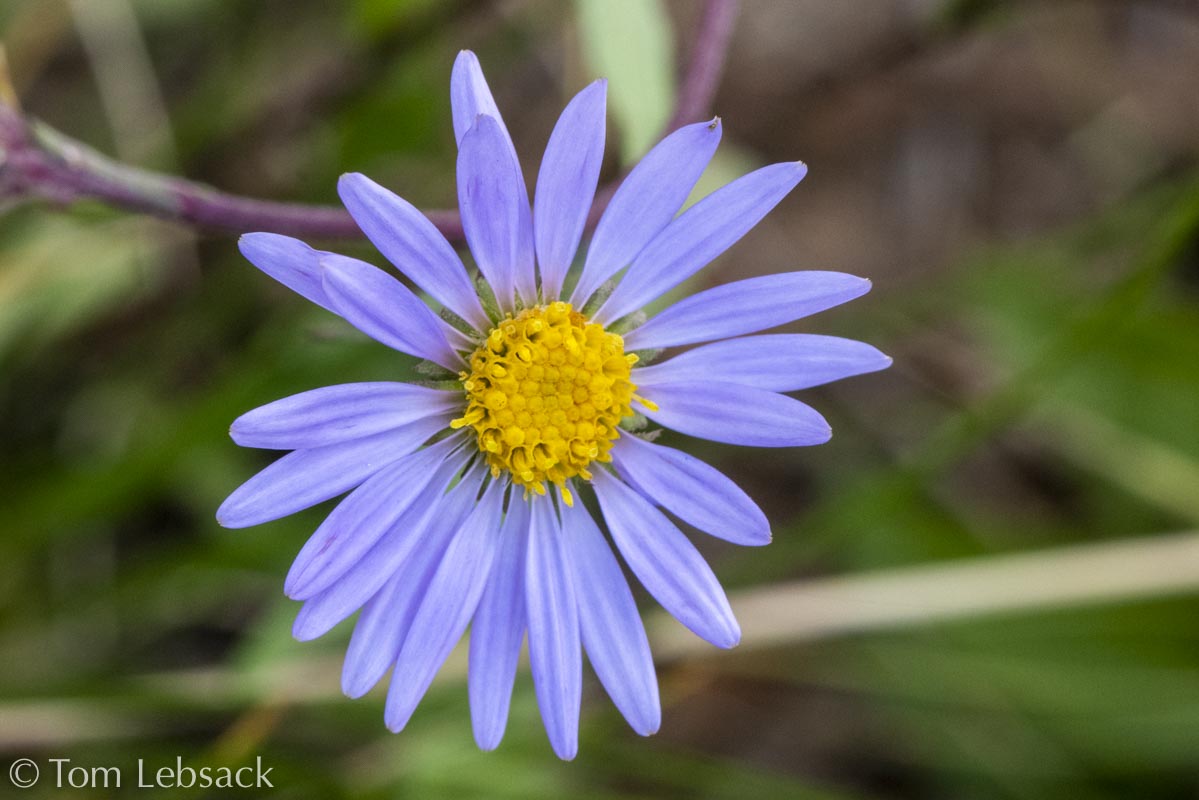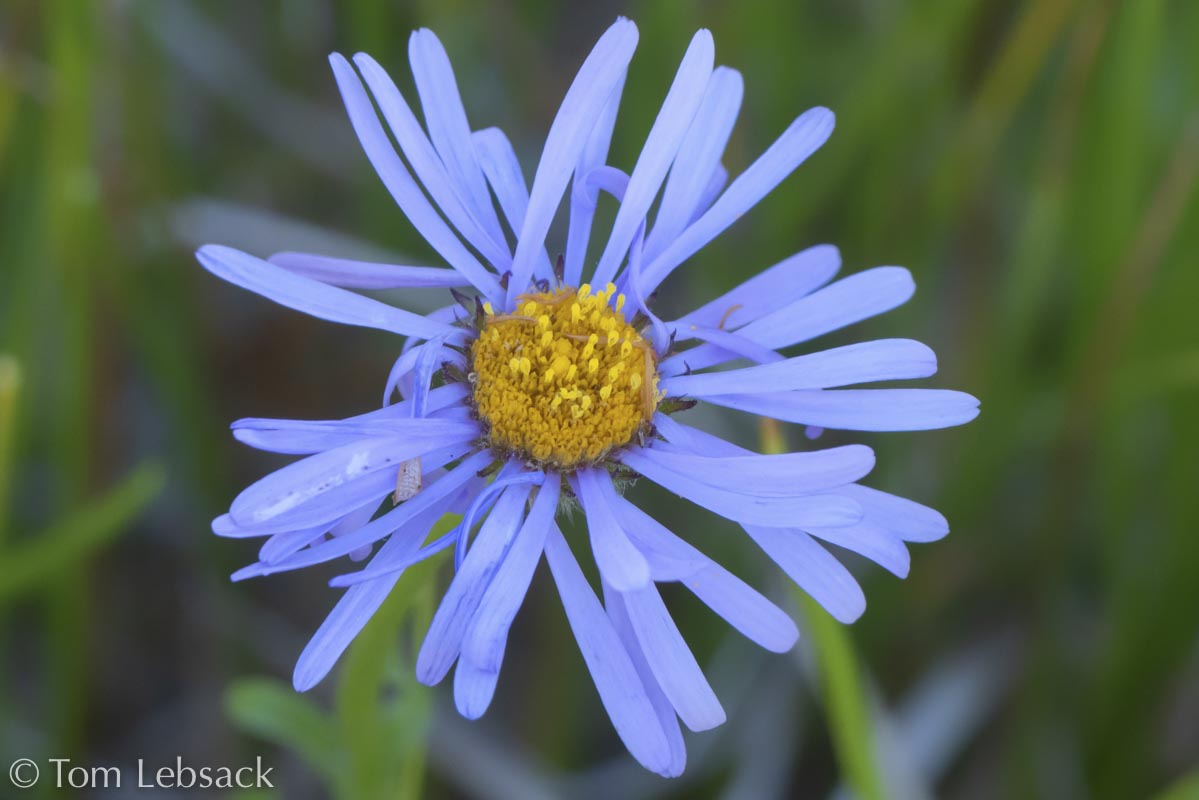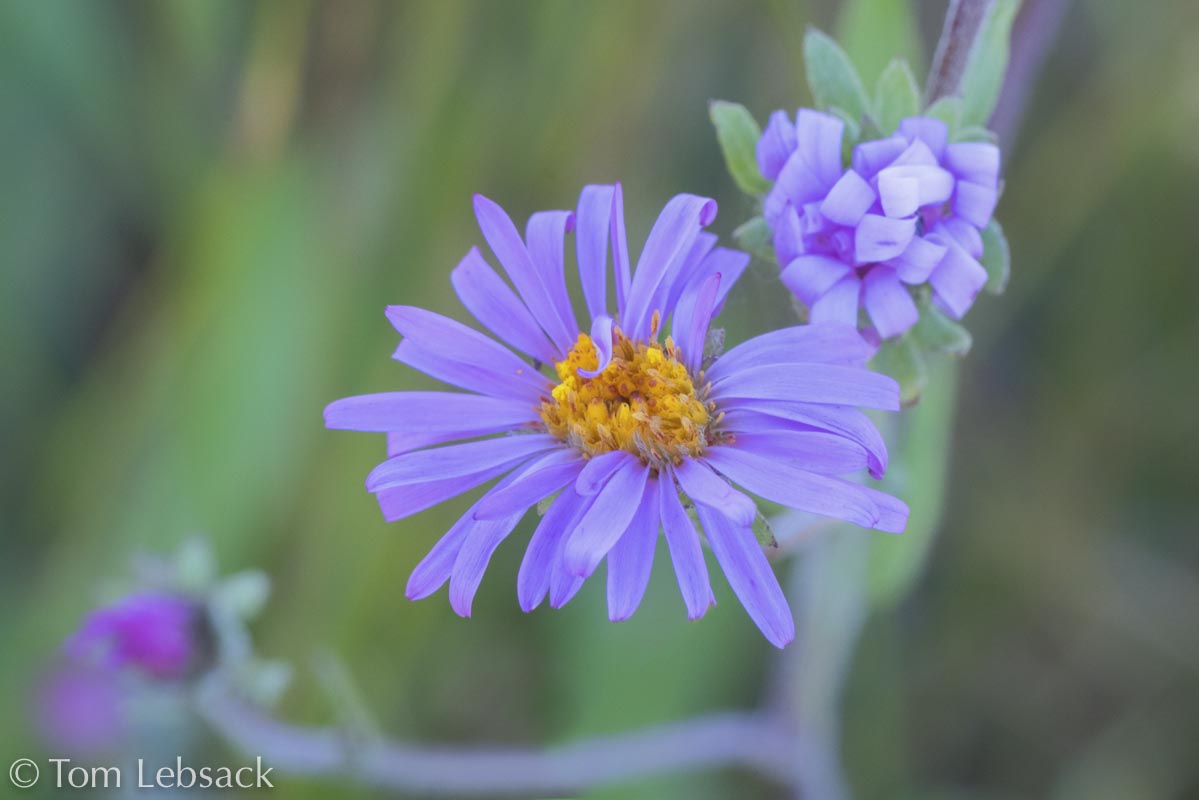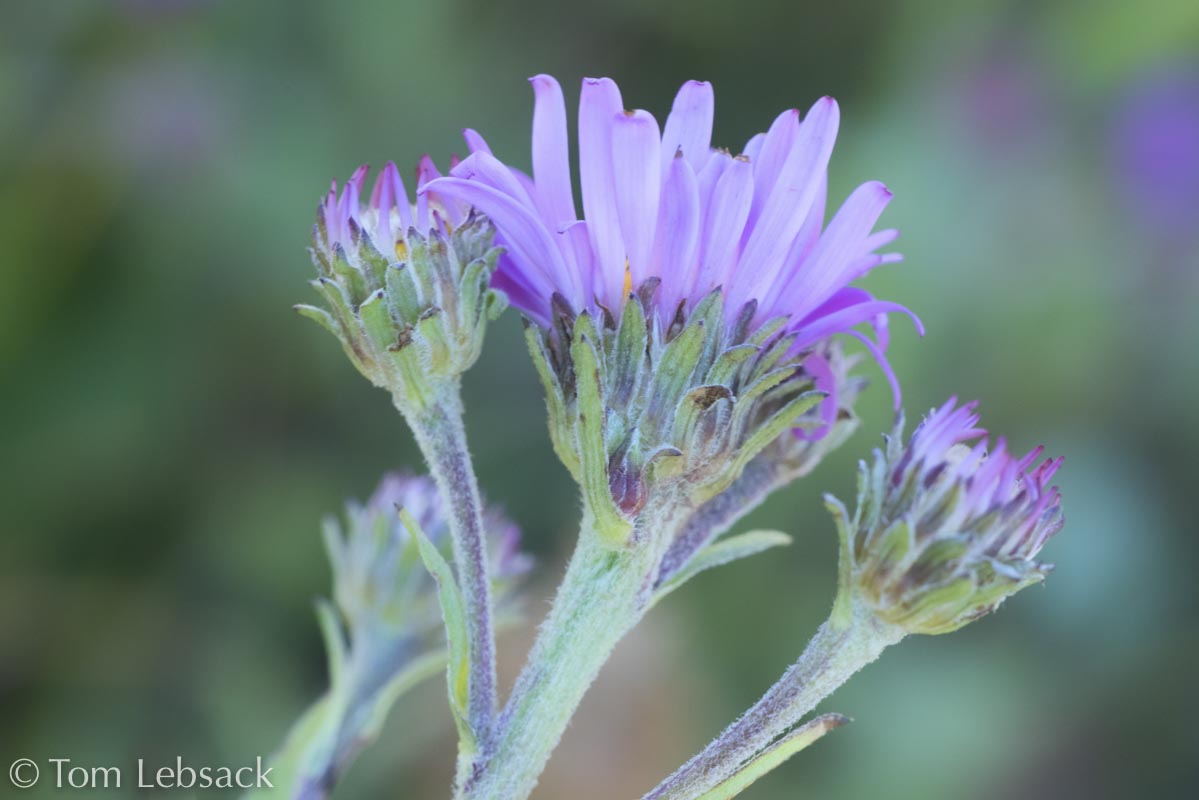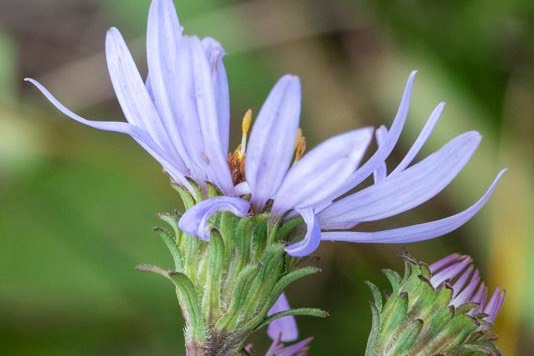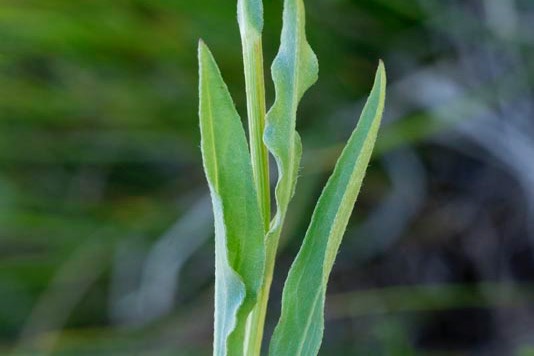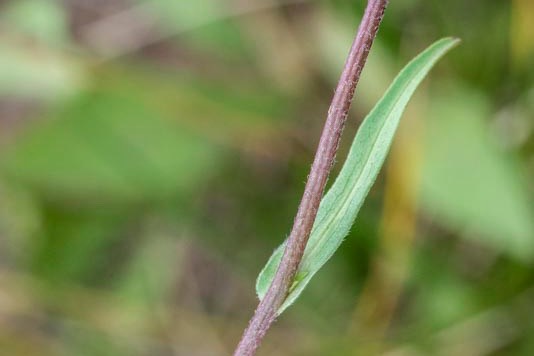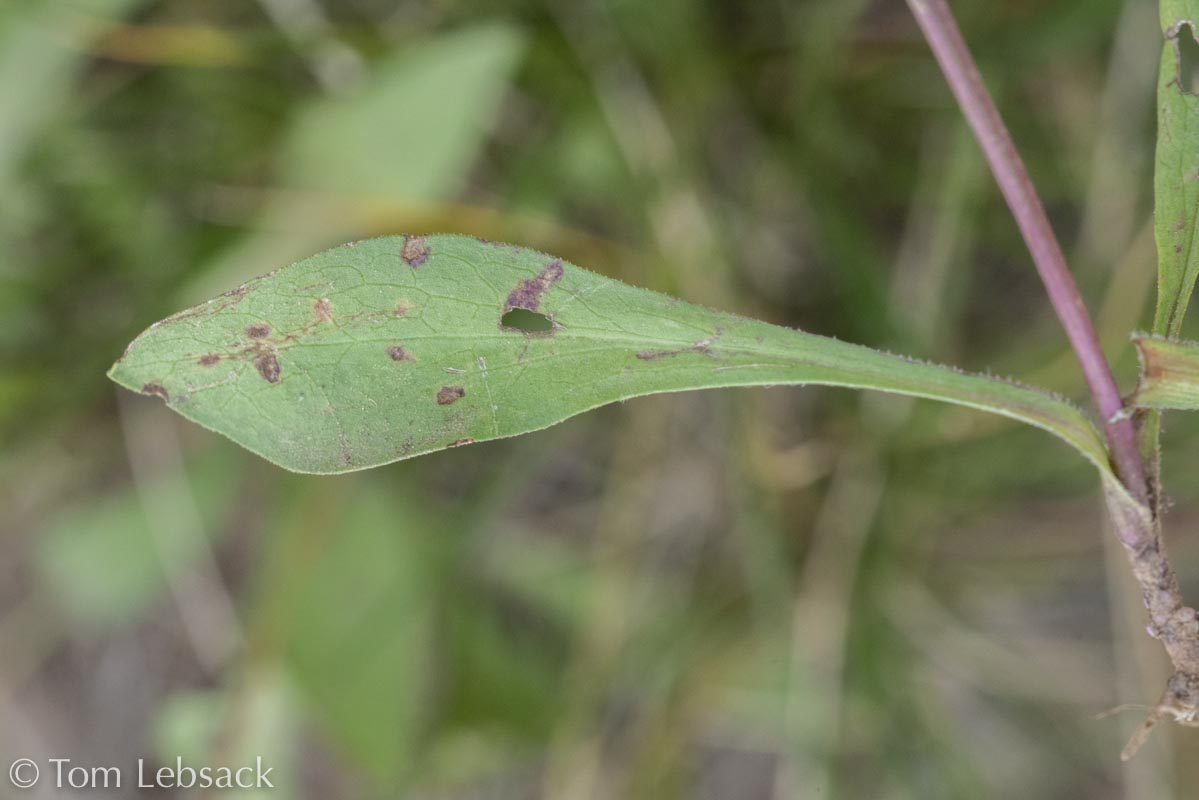Symphyotrichum spathulatum var. spathulatum
(Western Mountain Aster)
| Scientific Name | Symphyotrichum spathulatum var. spathulatum (Aster spathulatus) | USDA PLANTS Symbol | SYSPS |
| Common Name | Western Mountain Aster | ITIS Taxonomic Serial No. | 566344 |
| Family | Asteraceae (Sunflower) | SEINet Reference |
Click Here |
| Description |
Life zones and habitat: Foothills to subalpine (6000 to 10500 ft.); moist areas along streams and in meadows and forest openings. Plant: Erect perennial 8 to 24 inches tall with one to several stems that are smooth or sparsely covered with downy hairs, especially below the inflorescence. Leaves: Lower stem leaves narrowly oblanceolate to lanceolate to elliptic, up to 6 inches long, smooth surfaces with hairs along edges; shorter upper stem leaves narrowly-elliptic, lanceolate or linear and sessile. Inflorescence: Three to 10 composite flower heads in rounded cluster (cymose panicle), each 1 to 1-1/2 inches across with 15 to 50 rays, normally purple, violet or bluish; 30 to 80 yellow disk florets; phyllaries in 3–5 series, narrowly oblong or linear and unequal in length, surfaces smooth or somewhat downy-hairy. Bloom period: July to October. References: "Flora of Colorado" by Jennifer Ackerfield, Aster spathulatus in "The Alpine Flora of the Rocky Mountains" by Richard W. Scott, American Southwest, SW Colorado Wildflowers, and Flora of North America |
BONAP Distribution Map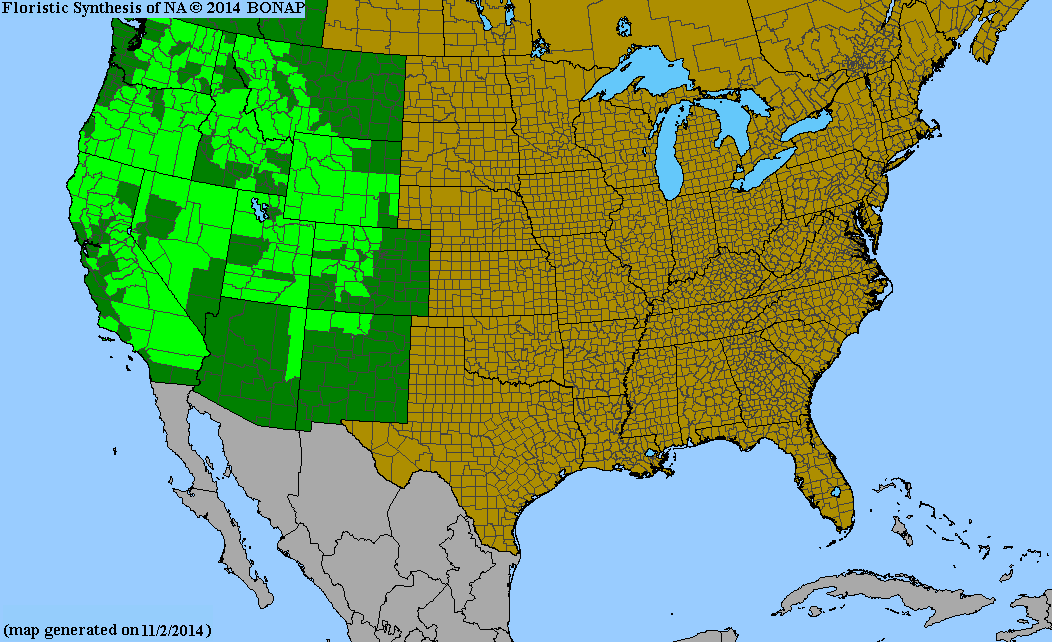 Map Color Key
Map Color Key | Colorado Status: Native |
© Tom Lebsack 2025
Banner photo: Castilleja rhexifolia and a brewing storm over the San Juan Mountains
I try to provide accurate, up-to-date, and relevant information, but cannot guarantee the completeness or accuracy of any information presented on this website. I use authoritative references to insure high standards of accuracy and review and update the information frequently.
